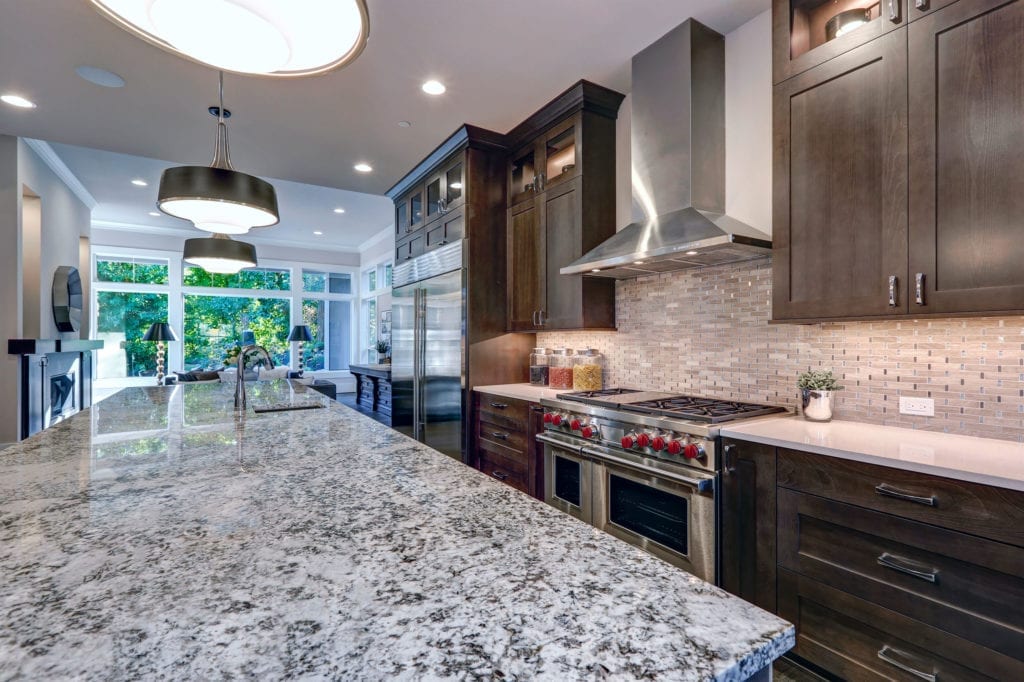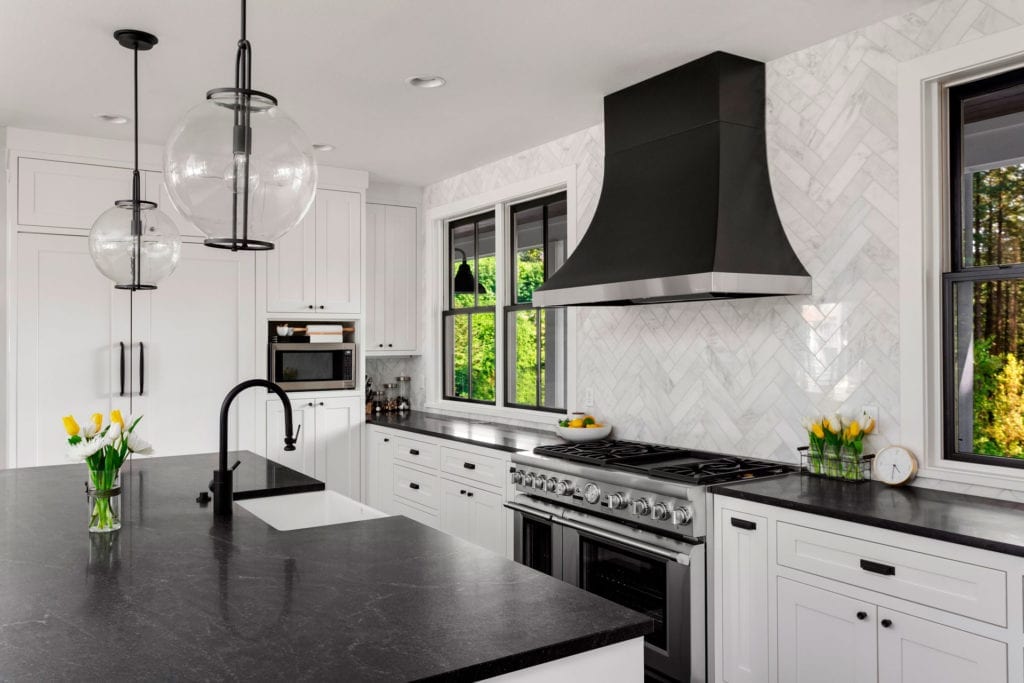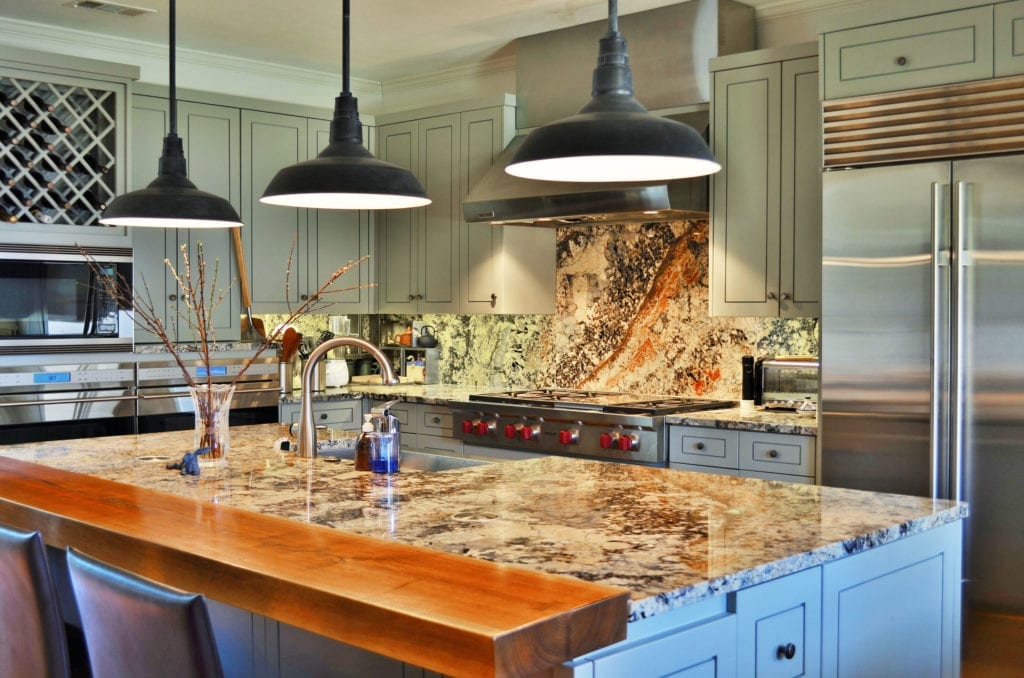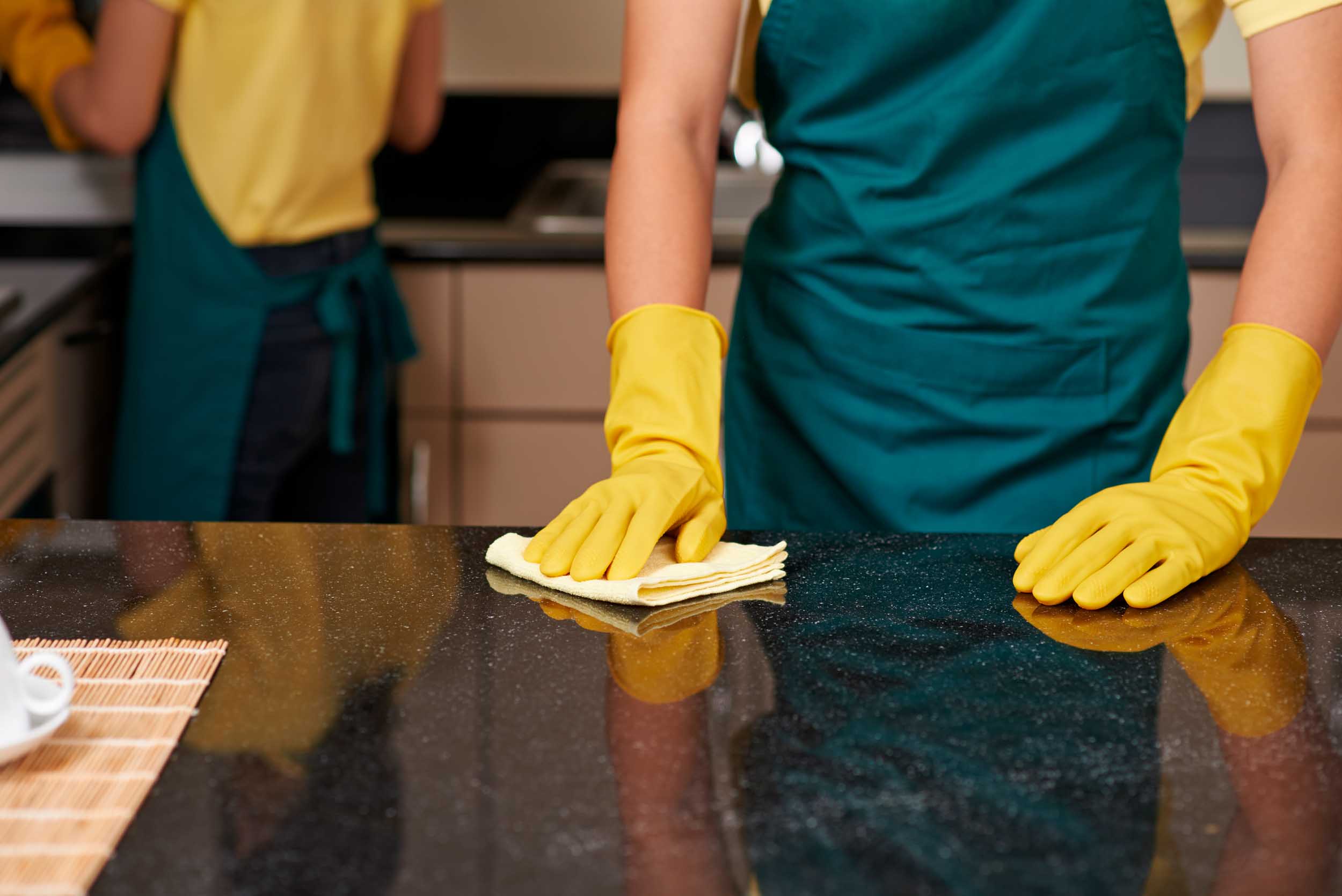Stain Removal
When something spills, blot it up immediately with a paper towel. Don’t wipe the area since that will spread the spill. Flush the area with plain water and mild soap and rinse several times. Dry the area thoroughly with a soft cloth. Repeat as necessary.
It’s not always possible to catch a stain before it sets. When this occurs, identifying the type of stain on the stone surface is the key to removing it. If you don’t know what caused the stain, play detective. Where is the stain located? Is it near a plant, a food preparation area, an area whee cosmetics are used? What color is it? What is the shape or pattern? What goes on in the area near the stain?
Surface stains can often be removed by cleaning with an appropriate cleaning product or household chemical. Deep-seated or stubborn stains may require using a poultice or calling in a professional. The following sections describe the types of stains that you may have to deal with and appropriate household chemicals to use and how to prepare and apply a poultice to remove the stain.

Types of Stains
Oil-Based
grease, tar, cooking oil, milk, cosmetics
An oil-based stain will darken the stone and normally must be chemically dissolved so the source of the stain can be flushed or rinsed away. Clean gently with a soft, liquid cleanser with bleach OR household detergent OR ammonia OR mineral spirits OR acetone.
Organic
coffee, tea, fruit, tobacco, paper, food, urine, leaves, bark, bird droppings
May cause a pinkish-brown stain and may disappear after the source of the stain has been removed. Outdoors, with the sources removed, normal suna nd rain action will generally bleach out th stains. Indoors, clean with 12% hydrogen peroxide (hair bleaching strength) and a few drops of ammonia.

Metal
iron, rust, copper, bronze
Iron or rust stains are orange to brown in color and follow the shape of the staining object such as nails, bolts, screws, cans, flower pots, metal furniture. Copper and bronze stains appear as green or muddy-brown and result from the action of moisture on nearby or embedded bronze, copper or brass items. Metal stains must be removed with a poultice. Deep-seated, rusty stains are extremely difficult to remove and the stone may be permanently stained.
Biological
algae, mildew, lichens, moss, fungi
Clean with dilute (1/2 cup in a gallon of water) ammonia OR hydrogen peroxide. DO NOT MIX BLEACH AND AMMONIA! THIS COMBINATION CREATES A TOXIC GAS.
Ink
magic marker, pen, ink
Clean with bleach OR hydrogen peroxide (light-colored stone only!) OR lacquer thinner OR acetone (dark stone only!).
Paint
Small amounts can be removed with lacquer thinner or scraped off carefully with a razor blade. Heavy paint coverage should be removed only with a commercial “heavy liquid” paint stripper available from hardware stores and paint centers. These strippers normally contain caustic soda or lye. Do not use acids or flame tools to strip paint from stone. Paint strippers can etch the surface of the stone; repolishing may be necessary. Follow the manufacturer’s directions for use of these products, taking care to flush the area thoroughly with clean water. Protect yourself with rubber gloves and eye protection, and work in a well-ventilated area. Use only wood or plastic scrapers for removing the sludge and curdled paint. Normally, latex and acrylic paints will not cause staining. Oil-based paints, linseed oil, putty, caulks and sealants may cause oily stains. Refer to the section on oil-based stains.
Water Spots and Rings
surface accumulation of hard water
Buff with dry 0000 steel wool.
Fire and Smoke Damage
Older stones and smoke or firestained fireplaces may require a thorough cleaning to restore their original appearance. Commercially available “smoke removers” may save time and effort.
Etch Marks
These are caused by acids left on the surface of the stone. Some materials will etch the finish but not leave a stain. Others will both etch and stain. Once the stain has been removed, wet the surface with clean water and sprinkle on marble polishing powder, available from a hardware or lapidary store, or you’re a commercial stone dealer. Rub the powder onto the stone with a damp cloth or by using a buffing pad with a low-speed power drill. Continue buffing until the etch mark disappears and the marble surface shines. Contact your stone dealer or call a professional stone restorer for refinishing or re-polishing etched areas that you cannot remove.

Efflorescence
This is a white powder that may appear on the surface of the stone. It is caused by water carrying mineral salts from below the surface of the stone rising through the stone and evaporating. When the water evaporates, it leaves the powdery substance. If the installation is new, dust mop or vacuum the powder. You may have to do this several times as the stone dries out. Do not use water to remove the powder; it will only temporarily disappear. If the problem persists, contact your installer to help identify and remove the cause of the moisture.
Surface and Nicks
Slight surface scratches and may be buffed with dry 0000 steel wool. Deeper scratches and nicks in the surface of the stone should be repaired and reported by a professional.


Making and Using a Poultice
A poultice is a liquid cleaner or chemical mixed with a white absorbent material to form a paste about the consistency of peanut butter. The poultice is spread over the stained area to a thickness of about 1/4 to 1/2 inch with a wood or plastic spatula, covered with plastic and left to work for 24 to 48 hours. The liquid cleaner or chemical will draw out the stain into the absorbent material. Poultice procedures may have to be repeated to thoroughly remove a stain, but some stains may never be completely removed.
Poultice Materials
Poultice materials include kaolin, fuller’s earth, whiting, diatomaceous earth, powdered chalk, white molding plaster or talc. Approximately one pound of prepared poultice material will cover one square foot. Do not use whiting or iron-type clays such as fuller’s earth with acid chemicals. The reaction will cancel the effect of the poultice. A poultice can also be prepared using white cotton balls, white paper towels or gauze pads.
Poultice Cleaning Agents or Chemicals
Oil-based Stains
Poultice with baking soda and water OR one of the powdered poultice materials and mineral spirits.
Organic Stains
Poultice with one of the powdered poultice materials and 12% hydrogen peroxide solution (hair bleaching strength) OR use acetone instead of the hydrogen peroxide.
Iron Stains
Poultice with diatomaceous earth and a commercially available rust remover. Rust stains are particularly difficult to remove. You may need to call a professional.
Copper Stains
Poultice with one of the powdered poultice materials and ammonia. These stains are difficult to remove. You may need to call a professional.
Biological Stains
Poultice with dilute ammonia OR hydrogen peroxide. Another method is bleach however, DO NOT MIX AMMONIA AND BLEACH! THIS COMBINATION CREATES A TOXIC AND DEADLY GAS!
Applying the Poultice
Prepare the poultice. If using using a powder, mix the cleaning agent or chemical to a thick paste the consistency of peanut butter. If using paper, soak in the chemical and let drain. Don’t let the liquid drip.
Wet the stained area with distilled water.
Apply the poultice to the stained area about 1/4 to 1/2 inch thick and extend the poultice beyond the stained area by about one inch. Use a wood or plastic scraper to spread the poultice evenly.
Cover the poultice with plastic and tape the edges to seal it.
Allow the poultice to dry thoroughly, usually about 24 to 48 hours. The drying process is what pulls the stain out of the stone and into the poultice material. After about 24 hours, remove the plastic and allow the poultice to dry.
Remove the poultice from the stain. Rinse with distilled water and buff dry with a soft cloth. Use the wood or plastic scraper if necessary.
Repeat the poultice application if the stain is not removed. It may take up to five applications for difficult stains.
If the surface is etched by the chemical, apply polishing powder and buff with burlap or felt buffing pad to restore the surface.
CAUTION: Do NOT mix bleach and ammonia! This combination produces a deady, toxic gas.

Showroom
12,000 sq ft showroom (MAP) a design laboratory where you can cement your architectural ideas
Testimonials
Hear from our clients on how we helped bring their vision to life.
For a Free Estimate
Jubilee Company fabricates and installs beautiful quartzite countertops in DFW. We stock, mill, and install custom all varieties of natural stone kitchen countertops. If you’re remodeling, renovating, or building a custom home we offer one of the largest selections of on-site slab inventories for DFW residents with hundreds of slabs in more than 70 varieties of natural and engineered stone to choose from. Our fabricator-direct advantage includes installation by highly-skilled professionals.
